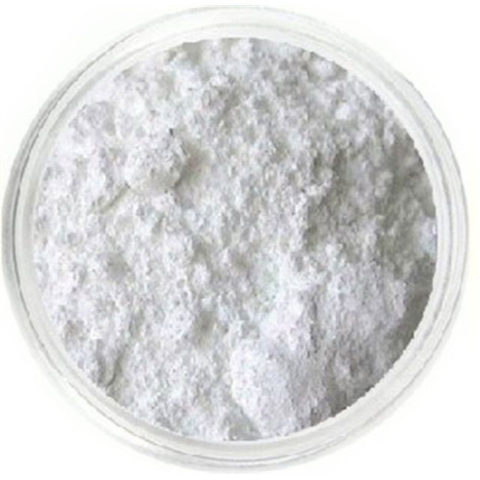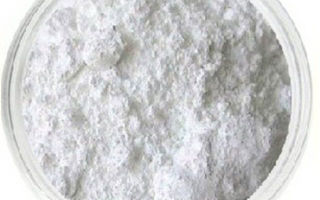Content
Among the commonly used food additives, experts call E171. The component is used in the food industry, cosmetology. However, the effect of titanium dioxide on the human body has not been studied enough.
What is the additive titanium dioxide E171
The chemical is a strong food coloring and bleaching agent. The index in the international classification is E171. The substance has several names:
- Oxide (IV) or titanium dioxide;
- E171;
- titanium dioxide;
- titanium anhydride;
- Pigment white;
- Titanic acid anhydride;
- titaniumoxide;
- titanium white;
- Titanium Dioxide.

The dye is a white powder characterized by the absence of taste and aroma. It is resistant to prolonged exposure to ultraviolet rays, temperature fluctuations, alkalis and acidic environments.
E171 is produced by the following countries:
- Finland;
- Russia;
- Ukraine;
- China.
The additive is approved for use all over the world. In Tunisia and Malaysia, the dye is used to make glaze.
Titanium dioxide composition
The additive includes the following components:
- titanium dioxide;
- white titanium.
It is known that titanium dioxide is responsible for the bleaching process. The substance is inert. The dye does not dissolve in the following media:
- vegetable oil (olive and sunflower);
- alcohol.
Titanium dioxide is also insoluble in water and acids. This property is used in industry. Dissolution occurs in a hydrogen fluoride environment. The additive is characterized by an almost complete absence of interaction with a significant amount of chemical compounds.
The dye has a high refractive index. It deflects, reflects ultraviolet rays.
The additive belongs to catalysts. The dye is extracted from natural deposits. It is found exclusively in combination with silicon and aluminum oxides, which are considered toxic compounds.
Benefits and harms of titanium dioxide
The additive has the following properties:
- lack of toxicity;
- chemical resistance;
- change in shade under heating conditions;
- high moisture resistance;
- full compatibility with film products;
- whitening and coloring ability.
The beneficial properties of the additive are used for the manufacture of sunburn creams and ointments used for allergic reactions. Experts attribute the dye to the best substances that protect the skin from ultraviolet radiation and melanoma.
E171 allows you to create quality products:
- decorative cosmetics (lipstick, powder);
- toothpaste;
- soap;
- antiperspirants.
Dangerous or not food additive E171
Titanium dioxide is used in various industries due to the properties of the substance.The additive is approved for use in many countries around the world.
The effect of the food additive e171 on the body has not been studied enough. The use of the substance in food is considered relatively safe.
It has been proven that the substance does not accumulate and is not absorbed by the body. Its removal is carried out in a few hours. There is an opinion that E171 has a negative effect on cellular elements. The substance is not natural. Its use is dangerous due to the appearance of an overdose.
The use of titanium dioxide, for example, in sweets, is not recommended for pathologies of the liver, kidneys, and the immune system. Inhalation of the powder can provoke the development of malignant tumors. The use of foods containing titanium dioxide during pregnancy is not recommended. This is due to the lack of data on the complete safety of the dye.
Adding titanium dioxide to food can only be safe in minimal dosages. Experts believe that the product can react with other biological components inside the body and provoke various complications:
- dementia in the elderly;
- increased excitability;
- neurological disorders;
- movement disorders in children;
- headaches;
- anemia;
- liver and kidney pathology;
- removal of phosphorus and calcium;
- impact on the vital activity of cellular elements.
What titanium dioxide contains
E171 is used in the production of medicines, cosmetics. The additive is included in the composition of food products. The substance gives the products a presentable appearance. Obtaining E171 from natural sources is essential.
Titanium dioxide E171 in drugs
Titanium dioxide is found in medicines. This is due to its basic properties. The relative safety of the substance is essential.
Titanium dioxide is included in tablets for the purpose of:
- making the shell white;
- improving the appearance of the pills;
- extending the shelf life.
The substance is added to suspensions, creams, pastes. Titanium dioxide is also found in vitamins.
Titanium dioxide in the food industry
The additive is used in the food industry. It is noteworthy that the volume of use is increasing every year. But she does not play a primary role. White crystals (fractional) are obtained in 2 ways:
- sulfate from ilmented concentrate;
- chloride from titanium tetrachloride.
The additive began to be used in 1994 as a natural dye due to its whitening effect. E 171 is used in the production of:
- dry mixes;
- breakfasts (fast food);
- dairy products.
Titanium dioxide is added to chewing gums and crab sticks as a natural bleach. E 171 is used in various food industries. In particular, titanium dioxide is widely used in cooking in the manufacture of:
- buns;
- cookies;
- sweets.
Titanium dioxide is added to chocolate. This should be taken into account if there are contraindications to substance use.
Conclusion
The effect of titanium dioxide on the human body is being studied by scientists in various countries of the world. It has been proven that the dye does not dissolve in gastric juice and cannot be absorbed in the digestive tract. The substance is excreted completely from the body. However, inhaling it is fraught with an increased risk of developing cancer. The product may be hazardous during manufacture. Thus, contact with it should be avoided by people with a weak immune system and pathologies of the liver and kidneys.

